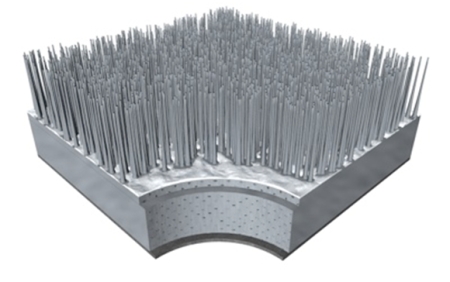Bandgap Engineering. Nanowire-enhanced solar cells.
Bandgap Engineering's innovative nano-siliconTM technology combines low-cost processing and increased efficiency for solar PV to be cost-competitive with the grid.
Silicon nanowires are structures with a diameter on the order of a nanometer (10-9 meters). Nano-silicon has several advantages over "bulk" silicon, namely that it can be "tuned" to greatly reduce reflection and increase absorption, two key aspects for increasing solar PV cell efficiency.
Bandgap's unique device design places a nanowire array on top of a standard P-N junction.
The propriety nano-structuring provides the benefits of nanowires, without a large junction area common in other nanowire solar designs, and allows the option to submerge the front electrical contact, thus increasing incident light ... and reducing manufacturing costs.
In other words, cheaper, better, and technically, just really cool. They make it look so easy!
Bandgap is a spinout of research done at Los Alamos and they are currently based in Woburn, MA. They've raised over $7 million in funding and they recently were selected by AlwaysOn as a 2011 GoingGreen Global 200 Winner.
Commercialization of the product is not clear, but I hope as soon as possible.
We definitely need more companies like Bandgap - a game-changing technology, a clear vision and defined applications (they also hope to use their nano-silicon technology in high-capacity lithium-ion batteries), and smart and passionate people. I saw the co-founder Marcie Black, PhD speak the other night, and I can attest that she is both incredibly clever - and really believes in what she's doing.


